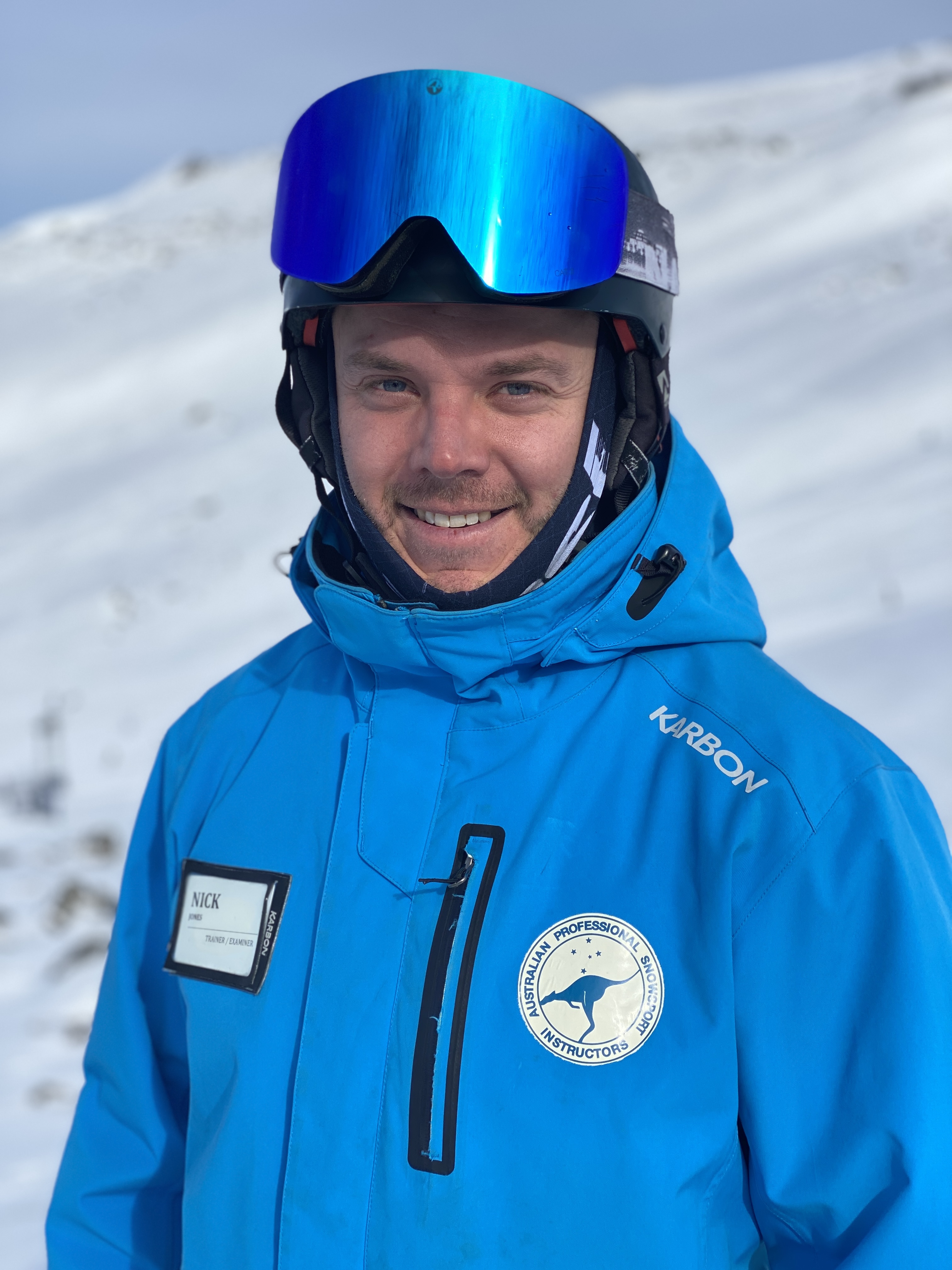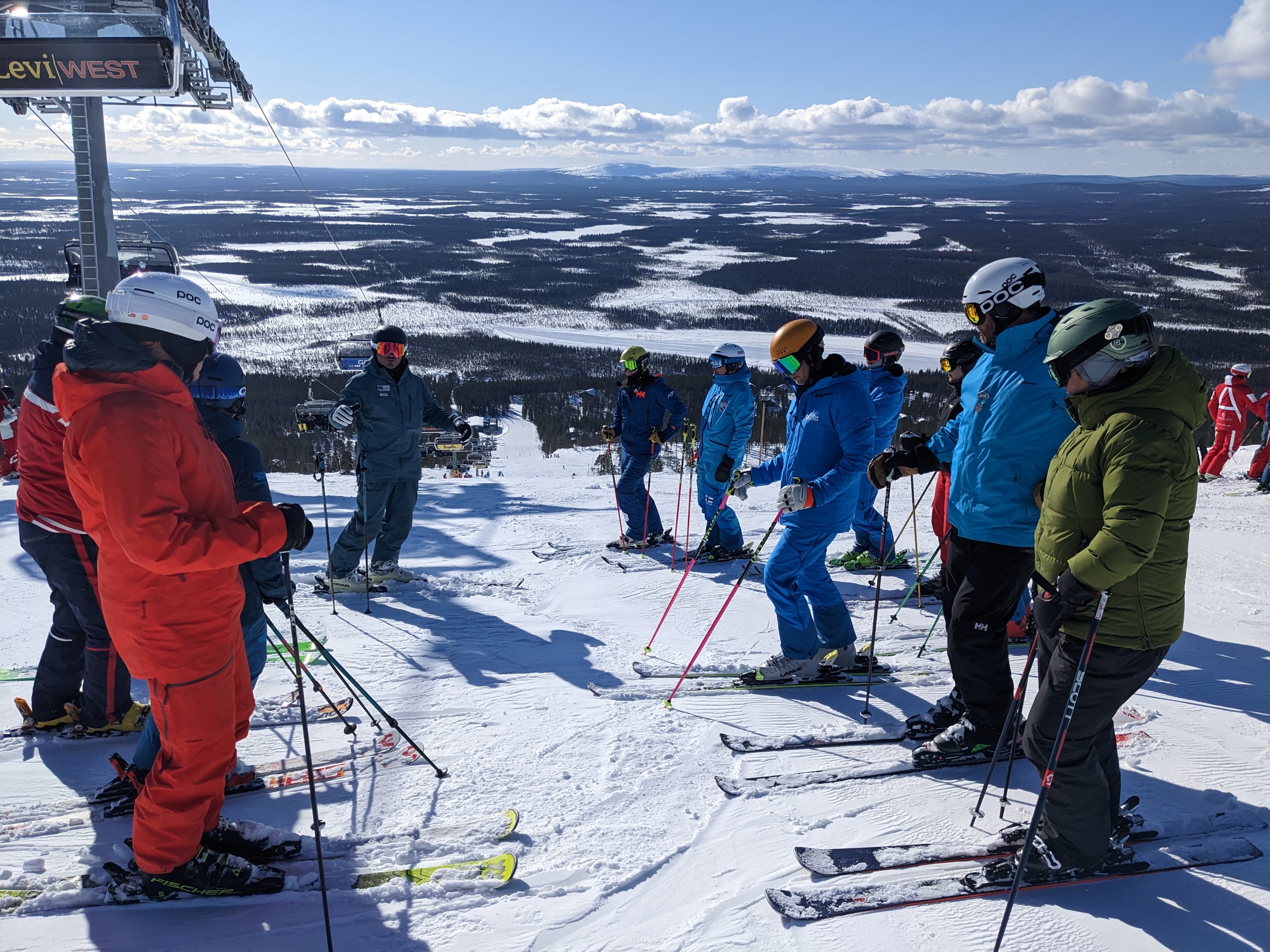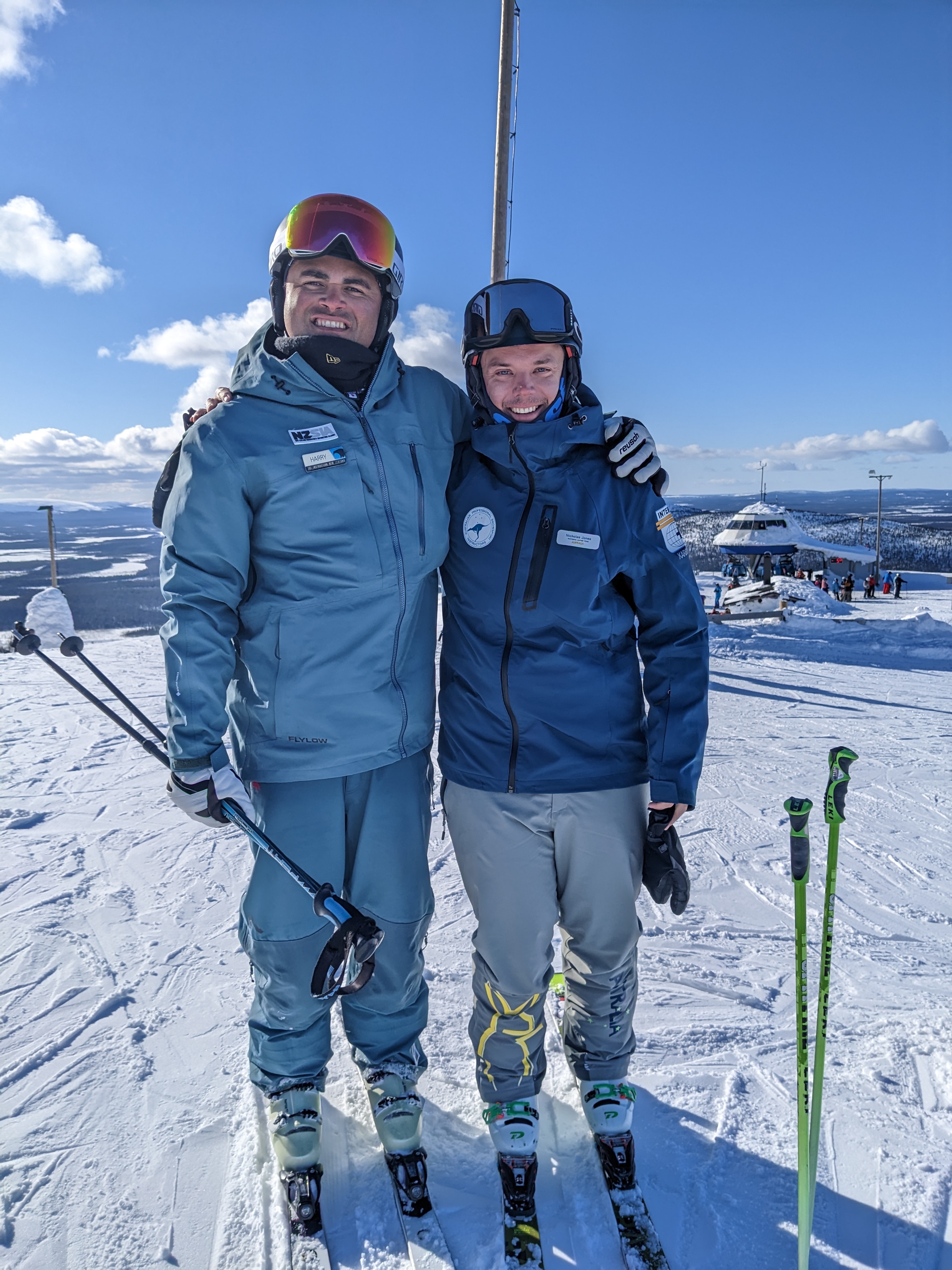 |
NEW ZEALAND Engaging the learner through clarity & impartial feedback |
By Nick Jones
Prior to Interski 2019, the NZIA reflected upon their instructor training courses and found that many candidates were not engaged in the learning process, relying heavily on direct trainer feedback rather than being able to assess their own performance against a given task or outcome.
Based on this the NZSIA made two changes:
- Redefinition of turn phases to ensure the learner had a clear description of the body movements and ski performance required in each phase of a turn.
- Implementation of Kolb’s Experiential Learning Model to encourage more reflection from the learner. (https://www.simplypsychology.org/learning-kolb.html)
This was the NZSIA’s first attempt at generating greater engagement from the learner. Fast forward to Interski 2023 and the NZSIA has evolved this philosophy to create a teaching system which provides clarity of outcome and seeks to engage the learner with impartial feedback through a two-way communication process.
The first step in the NZSIA’s new teaching model is develop the candidates understanding of what is required to complete the given task and demonstrate what success looks like.


To begin, an initial definition of ski performance, speed, and corridor is given in relation to the phases of the turn followed by a demonstration of success by the trainer. Here the candidate is given their first bit of control over the learning process; they can choose where they want to view the demonstration from before they try the task themselves. This may take several runs to achieve full understanding.
Only once the task has been defined and understood does the lesson flows into the NSIA’s new “Seek, Give, Seek” feedback model:
Seek: The trainer asks specific questions of the learner relative to performance outcome. i.e., “can you see two clearly carved lines in the snow?” This aims to invite input from the learner and gives the trainer some idea of the learners’ perception of their performance.
Give: The trainer provides accurate feedback based on the candidate’s performance and reflection using non-judgmental language with impartial mediums such as drawings, film or marks the candidate has left on the snow. This aims to reduce emotional responses from the candidate which could result in them disengaging from the learning process.
Seek: A two-way dialogue is created between the candidate and trainer as they make decisions to progress the lesson. i.e., “your ski was in the air in this point of the turn. What do you feel when you have a solid connection to the ski when it’s on the ground? Let’s try and feel that in this part of the turn next run.”
Kolb’s Experiential Learning model is by no means new, and several nations have used this model in the past, often resulting in confused and frustrated training candidates. What sets the NZSIA apart is their recognition that clarity must be created around a task for the learner to be able to reflect accurately and be engaged in the feedback process. This teaching model has strong potential and it will be great to hear how it evolves further with the re-writing of the NZISA’s manual over the coming Southern Hemisphere Summer.
